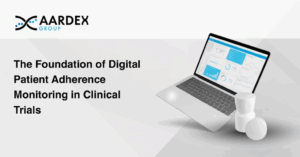WHO cares. It’s now time you did
Why Change is Needed in Clinical Trials?
The old adage tells us not to fix things that aren’t broken. Logic suggests, therefore, that whenever a fix is being applied, things aren’t working as they should.
And this is certainly the case when it comes to clinical trials.
Late in 2024, the World Health Organization (WHO) launched best-practice guidance, signaling the need to re-evaluate global and national approaches to an industry fundamental to the advancement of new treatments and better healthcare.
WHO’s Resolution: A Call for Higher Standards
WHO’s guidance stems from Resolution 75.8, adopted in May 2022, which stresses the urgent need for:
✅ Strengthening clinical trials to provide high-quality evidence on health interventions.
✅ Improving research quality and coordination.
✅ Enhancing clinical research efficiency to minimize waste and ensure sustainability.[1]
Within a 76-page document, it sets out a clear picture of the importance of clinical trials, and randomized clinical trials (RCT) in particular. At the same time, it highlights the range of current challenges that can hinder best practice and compromise the quality of trial outcomes, pointing to the need “to enhance clinical research efficiency, minimize research waste and provide guidance on sustained clinical trials that are always functional and active for endemic conditions and can pivot in time of emergency or pandemics”.
Achieving those multiple objectives will no doubt require concerted implementation of the document’s various recommendations by many different stakeholders across all aspects of the design, co-ordination, implementation, analysis and reporting of clinical trials. In these terms, it appears to reflect a challenging and highly complex task.
And yet, underlying all this complexity, there is a very simple message that sits at the heart of the guidance: better trial practices are needed if we are to elicit better answers to key questions around efficacy and safety. Indeed, WHO spells this out clearly in its own language in section 2.1, where it states that “Good clinical trials are designed to produce scientifically sound answers to relevant questions”.
Going further, WHO adds that adherence plays a pivotal role in uncovering these answers, given its importance to accurately determining and quantifying the impact of the allocated trial intervention. In essence, it is saying that we can only develop a reliably complete understanding of the clinical response to a drug under trial if we have absolute certainty over the level of exposure. However, if there are weaknesses relating to medication adherence, then it is well documented that the findings will be skewed, the quality of the data will be diminished, and the critical questions of efficacy and safety will go unanswered.
Adherence in Clinical Trials: The Missing Piece
WHO’s guidelines reaffirm medication adherence as a core principle in intention-to-treat (ITT) analysis. However, many trials still fail to acknowledge and address weaknesses in adherence measurement.
Challenges with current adherence tracking:
🔹 Inconsistent measurement methods create variability in adherence rates across trials[2] .
🔹 Self-reported tracking (e.g., pill count) introduces human error and psychological bias, leading to false reporting. [3]
The result? Medication intake behaviors go untracked, leading to misinterpreted data and unreliable clinical trial results.
In these situations, medication intake behaviours are not accurately tracked, leading to poor assessment of true exposure levels and flawed interpretation of study data. In turn, co-ordinators cannot be assured of the validity and reliability of clinical trial results.[4]
The Need for Smarter Adherence Monitoring
WHO’s guidance emphasizes the importance of reliable adherence tracking: “Efforts should be made to facilitate and encourage adherence to the allocated intervention(s).”
The solution?
✅ Digitally enabled, automated data collection – enhancing accuracy and reducing burden on participants and staff.
✅ Smart packaging & drug delivery devices – providing seamless, real-time data on medication exposure.
These technological advancements align with WHO’s vision for more efficient, data-driven clinical trials.
Complementing this point, the organization also advocates the use of digitally enabled automatic data-collection processes to enhance data relevance, reliability and completeness without burdening trial participants and staff. While this message applies across the board, in the context of adherence this approach is symbolised by the replacement of self-reporting methods with smart packaging and drug delivery devices which directly facilitate the seamless gathering of reliable data on medication exposure.
Bridging the Gap Between Data & Confidence
The transition to such technologies perhaps represents a departure from the status quo, but they are in line with the vision of an enhanced clinical trial landscape set out by WHO within the guidance. In publishing the document, the organization has provided both tacit admission that the current system is flawed as well as a blueprint for its improvement. Undoubtedly, it is a significant step, but whether it proves to be a pivotal moment will depend on whether stakeholders embrace the underlying sentiment, accept that change is needed, and deliver a fix to adherence that ensures trials can fulfil their invaluable promise of delivering scientifically sound answers to the crucial questions of efficacy and safety.
Establishing hard evidence for your trial…
AARDEX has a best practice methodology, independent of any device package or software platform. Utilising our expertise and experience in medication adherence and patient compliance we acquire, monitor, analyse, guide and interpret data to deliver absolute clarity and bring confidence to sponsors, trialists, and ultimately, patients.
We are the only mature, robust, and proven adherence solution that:
✔ Maximizes rewards.
✔ Mitigates risks.
✔ Delivers certainty in exposure-response.
With clarity, integrity, and certainty, we help you move forward with complete confidence in your clinical trial outcomes.
[1] https://apps.who.int/gb/ebwha/pdf_files/WHA75/A75_R8-en.pdf
[2] https://pubmed.ncbi.nlm.nih.gov/35816103/
[3] https://aardexgroup.com/pill-count-compliance-its-time-to-burst-the-drug-trial-bubble/



